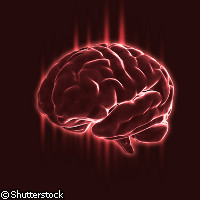Searching for the seat of consciousness
Where does consciousness originate? Is it purely a product of electrical impulses in the brain or does it arise from an indefinable and mysterious process quite distinct from the brain? The subject has been debated by scientists for centuries, but no definitive answer has ever been universally accepted. Consciousness, with its infinite ability to evade definition, is one area of human biology that remains a mystery. A newly published study by French scientists puts forward a new theory. It suggests that four specific and separate activities combine to make up a 'signature' of conscious activity. Writing in the journal PLoS Biology, they describe how they studied the neural activities of a group of people who were shown two different types of stimuli. One of these stimuli could be perceived consciously and the other could not. The study showed that the four separate processes of consciousness only occurred in the conscious perception task. The study was carried out at an unprecedented resolution using intra-cerebral electrophysiological recordings of neural activities. This high resolution was possible because the subjects who took part were epilepsy sufferers already undergoing medical procedures that required them to have recording electrodes implanted. The authors showed the subjects sets of printed words, both visually masked and unmasked, and then measured changes in brain activity and levels of awareness of seeing the words. From the subjects' brain responses the scientists were able to isolate four converging and complementary electrophysiological markers characterising conscious access 300 milliseconds after their perception of the word. The authors of the paper believe that it is the convergence of the four electrophysiological markers rather than just the presence of any one of them which characterises consciousness trials. The study will help to define more closely some basic questions about the timing, location and dynamics of events in the neural process that allows access to and identification of information. In the past, some neuroscientists speculated that consciousness may arise from a single part of the brain, although the current view is that it is probably a more global process occurring across different regions of the brain. 'The present work suggests that, rather than hoping for a putative unique marker - the neural correlate of consciousness - a more mature view of conscious processing should consider that it relates to a brain-scale distributed pattern of coherent brain activation,' said neuroscientist Lionel Naccache of INSERM, the French National Institute for Health and Medical Research, one of the authors of the paper.
Countries
France



